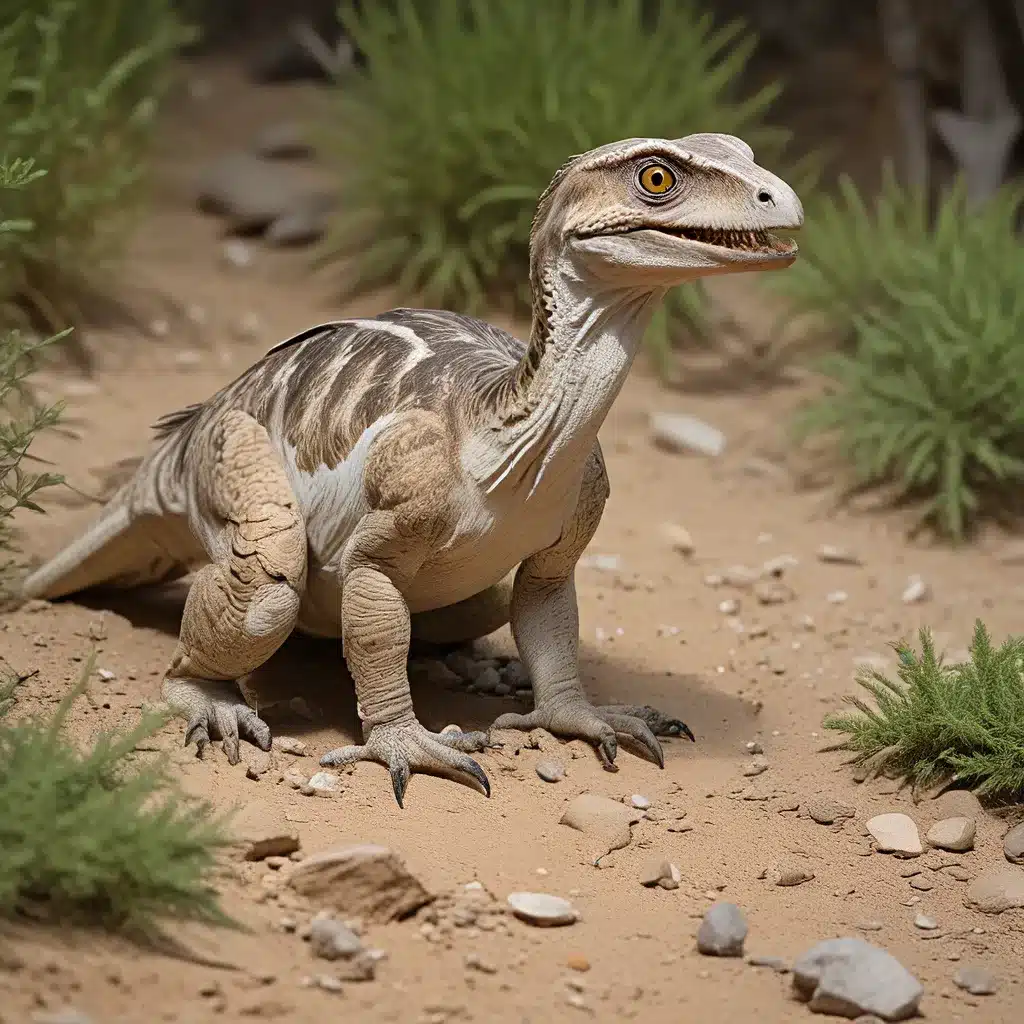
In the vast tapestry of dinosaur paleontology, one group has long captured the imagination of scientists and enthusiasts alike: the Oviraptorids. These enigmatic theropod dinosaurs, renowned for their distinctive head crests and intriguing feeding habits, have also left behind a wealth of clues about their nesting behaviors, offering a tantalizing glimpse into their fascinating lives.
Uncovering Oviraptorid Nests: A Treasure Trove of Discoveries
The Oviraptorid nesting habits have been a subject of intense study and debate among paleontologists. Over the years, numerous nests and clutches of Oviraptorid eggs have been unearthed, providing invaluable insights into their reproductive strategies and parental care.
One of the most significant discoveries was the 2017 find in the Gobi Desert, which revealed a remarkable “dinosaur nursery” – a site where multiple Oviraptorid nests were found in close proximity. This extraordinary find shed light on the social and nesting behaviors of these dinosaurs, suggesting they may have engaged in communal nesting, with individuals cooperating to care for their offspring.
Further excavations have uncovered other intriguing Oviraptorid nesting sites, each with its own unique set of characteristics. Some nests have been found with the adult Oviraptorid preserved in a brooding position, suggesting they may have actively incubated their eggs, much like modern birds. These discoveries have challenged our understanding of dinosaur parental care, hinting at a level of complexity and nurturing behavior that was previously unrecognized.
Unraveling the Mysteries of Oviraptorid Incubation
One of the most fascinating aspects of Oviraptorid nesting habits is the apparent care and attention they devoted to their eggs. Numerous nests have been found with the adult Oviraptorid positioned directly on top of the eggs, suggesting a behavior akin to modern bird incubation.
This hypothesis is further supported by the presence of specialized adaptations in the Oviraptorid skeleton, such as enlarged pelvic bones and thickened feathers on the underside of the body. These features would have allowed the dinosaurs to efficiently transfer body heat to their eggs, ensuring proper incubation and the successful development of their offspring.
Moreover, the discovery of brooding Oviraptorid fossils has revealed interesting details about their nesting behavior. In some cases, the adult has been found with its head tucked under its body, suggesting a protective, nurturing posture similar to that of modern brooding birds. This level of parental care and investment in their offspring’s survival is a testament to the complexity of Oviraptorid behavior.
Comparing Oviraptorid Nesting Strategies to Other Dinosaurs
While the nesting habits of Oviraptorids have captivated paleontologists, it is important to consider their behaviors in the broader context of dinosaur evolution and reproduction. When compared to other dinosaur groups, the Oviraptorid nesting strategies reveal both similarities and striking differences.
For instance, the communal nesting behavior observed in Oviraptorids has also been documented in some sauropod dinosaurs, suggesting that this social nesting strategy may have been more widespread among certain dinosaur species. However, the level of parental care and active incubation exhibited by Oviraptorids is a unique characteristic that sets them apart from many other dinosaur groups.
Furthermore, the discovery of Oviraptorid nests with the adult positioned directly on the eggs has led to comparisons with the nesting behaviors of modern birds. This potential evolutionary link between Oviraptorids and avian species has become a subject of intense debate and ongoing research, as paleontologists strive to unravel the complex relationship between these prehistoric creatures and their feathered descendants.
Emerging Theories and Future Directions
As new discoveries continue to shed light on the Oviraptorid nesting habits, researchers have proposed various theories to explain the observed behaviors and their significance in the broader context of dinosaur evolution.
One intriguing theory suggests that the Oviraptorid nesting strategies may have been an adaptation to the harsh environmental conditions of their Cretaceous habitats. The ability to actively incubate their eggs and potentially engage in communal nesting may have provided a selective advantage, ensuring the survival of their offspring in the face of predators, temperature fluctuations, or other environmental challenges.
Moreover, the similarities between Oviraptorid nesting behaviors and those of modern birds have sparked discussions about the potential evolutionary pathways that may have led to the emergence of avian characteristics. As paleontologists continue to uncover new evidence and refine their understanding of dinosaur behavior, the connections between Oviraptorids and the origins of birds may become increasingly clear.
Ultimately, the study of Oviraptorid nesting habits has not only enriched our knowledge of these remarkable dinosaurs but has also opened up new avenues of inquiry into the complex and dynamic world of prehistoric life. As the field of paleontology continues to evolve, the enigmatic Oviraptorids will undoubtedly remain a captivating subject of exploration, inviting us to delve deeper into the mysteries of the ancient past.


